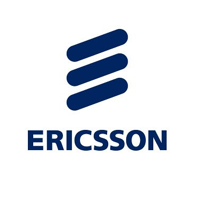-
5G Ecosystem
GSA continually tracks progress on developments around the 5G Ecosystem and produces monthly industry reports
The 5G Ecosystem is a rapidly expanding industry of suppliers from device manufacturing, network supply and maintenance, system integration, test & validation and consulting. GSA predicts 5G growth will be faster than 4G; which took seven years to reach 100 million subscriptions. 5G is expected to reach 100 million subscriptions within five years.
View the 5g Ecosystem report -
-
5G Spectrum
5G Spectrum is key to the growth of 5G and the GSA Spectrum Group supports the harmonisation of 5G spectrum for global use
One of the main benefits 5G brings to mobile broadband is new spectrum in the 3.4 GHz to 4.2 GHz band (sometimes referred to as C-Band) and millimetric wave bands (mmWave) (above 6 GHz). These higher mmWave bands have greater spectrum – wider bandwidth – so can support far greater capacity, faster downloads and more subscribers. GSA reports on 5G spectrum availability and allocation in its monthly reports.
Read The Report -
-
5G networks ecosystem
From trials to commercial launches - GSA tracks and reports on 5G networks and deployments
The first 5G network deliveries have been Non-Stand-Alone (NSA) configurations based on 3GPP Standards Release 14 (Rel:15) which was completed in late 2017. This means the 5G network is “anchored” in a 4G network. This has some initial advantages and some disadvantages. See Table 1.
NSA deployments will typically be rolled out in 2019 and Stand Alone (SA) deployments are expected to follow based on the 3GPP Release 15 (Rel:15) of the standards.
3GPP placed a great deal of effort in 2018 to complete Rel:15 – which is considered to be the first full set of 5G standards and is part of the agreed 3GPP milestones for 3GPP so submit towards IMT-2020. Rel:15 supports 5G SA deployments.
Find Out More -
Table 1: Comparison of 5G radio access and core networks. Source GSMA "Road to 5G: Introduction and Migration"
-
5G devices ecosystem
The 5G device manufacturers have recognised the importance of 5G, which brings the mobile communications experience closer to that of fixed broadband.
The availability of devices, including smartphones has enabled multiple operators to launch 5G networks post standards completion, earlier than previous technology generations. GSA has a detailed database of both 4G and 5G devices from which its 5G device ecosystem reports are generated.
5G Devices report -
-
Innovations
New innovations in devices are being seen with 5G such as foldable screens, gigabit data smartphones and Internet of Things (IoT) products that will extend mobile connectivity and communications into vertical industries such as manufacturing, robotics, remote monitoring and many other industrial applications. Industry expectations are that billions of IoT device will be enabled with 5G as industrial connectivity and 5G radio coverage is increased in factories and offices.
-
5G in-building
In-building 5G coverage is vital for the deployment Industry 4.0 as mobile connectivity becomes totally ubiquitous
5G deployments with mmWave spectrum (above 6 GHz) is ideal for in-building and factory applications. Modern buildings are now constructed with glass that is low iron, anti-reflective and incorporates solar-control and acoustic properties creating a Faraday cage that makes it difficult to propagate radio signals from outside to the inside of the building. Older offices or factories are also often difficult to service from outdoors if they are constructed with thick brick walls or have metallic structures or heavy machinery incorporated. Serving underground areas is also problematic. mmWave 5G is therefore a good option for in-building coverage since this spectrum would be more easily contained within the building, especially if it was low power, and would be less likely to cause interference to external networks.
Find Out More About 5G -
Get in touch to find out more
Your organisation can benefit from being a Member of GSA or an Associate to gain access to all of the data that GSA is collecting and reporting on as well as help drive the GSA agenda and your own company messaging
Find Out MoreRecent Reports

Ericsson Mobility Report June 2025
Ericsson Mobility Report June 2025 5G subscriptions are growing apace, accounting for over one-quarter of total mobile subscriptions at the…

5G-RedCap – Ericsson Whitepaper
5G-RedCap – Ericsson Whitepaper RedCap – expanding the 5G device ecosystem for consumers and industries. For more on this topic…

5G Experience June 2025
5G Experience June 2025 The June 2025 report, based on data from Opensignal, assesses global 5G network performance in various…



